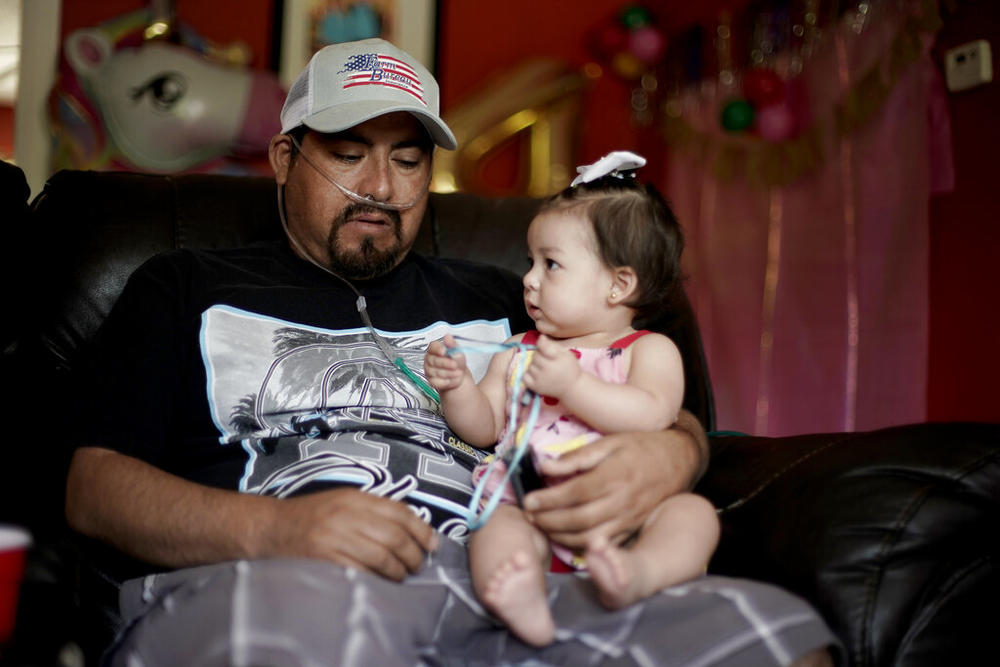
Caption
Freddy Fernandez holds his eight-month-old daughter Mariana Friday, June 10, 2022, at their home in Carthage, Mo. After contracting COVID-19 in August 2021, Fernandez spent months hooked up to a respirator and an ECMO machine before coming home in February 2022 to begin his long recovery from the disease.
Credit: (AP Photo/Charlie Riedel)

